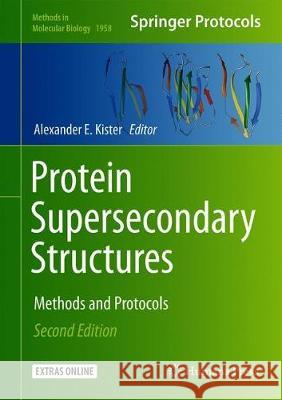Protein Supersecondary Structures: Methods and Protocols » książka
topmenu
Protein Supersecondary Structures: Methods and Protocols
ISBN-13: 9781493991600 / Angielski / Twarda / 2019 / 438 str.
Kategorie:
Kategorie BISAC:
Wydawca:
Humana Press
Seria wydawnicza:
Język:
Angielski
ISBN-13:
9781493991600
Rok wydania:
2019
Wydanie:
2019
Ilość stron:
438
Waga:
1.00 kg
Wymiary:
25.4 x 17.78 x 2.54
Oprawa:
Twarda
Wolumenów:
01
Dodatkowe informacje:
Wydanie ilustrowane











